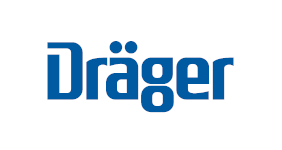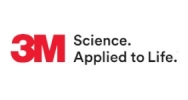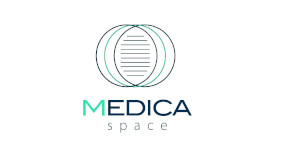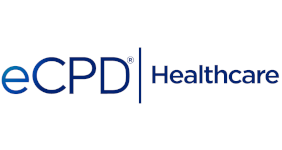Type 2 diabetes: Oral antidiabetic medications in 21st century
At the beginning of the 21st century the incidence of type 2 diabetes mellitus is still increasing all over the world. Diabetes and its complications are truly the main public health problem of modern societies. Despite the better understanding of the pathophysiology of diabetes and the introduction of a number of new medications in the last two decades, we still cannot cure diabetes. The best we can settle for is the long-term control of blood pressure, cholesterol levels and blood glucose levels. The development of modern bariatric surgeries and their implementation for patients with type 2 diabetes mellitus, appears to bring long-term remission to some of these patients. However, that is the case only in patients who are recently diagnosed with diabetes.
PREVENTION, NOT CURE
To stop the tidal wave of diabetes we need to implement prevention programmes. These programmes need to be national priority and have to be aimed at parents of young children, teachers of these children and their healthcare providers. Programmes need to focus on promoting healthy diet, maintenance of a healthy body weight and to emphasise the importance of physical activity for healthy metabolism. Using the internet, paper publications and TV programmes would allow us to reach the widest possible audience for these educational programmes. It is paramount to accurately estimate current measures of obesity, metabolic syndrome and rates of diabetes in different age groups to be able to measure the effects these programmes will have, and modify the content and delivery method toward the most effective ones over time.
TREATMENT PLANS
For those who are already diagnosed with diabetes, treatment needs to focus on the education of the patient regarding the principles and goals of the treatment. Since treatment is complex, expensive and lifelong it is important that patients understands why certain medications are used, what are the levels of blood pressure, cholesterol and blood glucose levels that we are aiming to achieve, as well as why is that important. Patients with this understanding are much more likely to follow the regimen than one who does not understand these facts.
Obese patients (BMI >30 kg/m2) who are diagnosed with diabetes should seriously consider bariatric surgery for treatment. I am not saying that every patient should be advised to have the surgery, but those who are unable to achieve significant improvement in body weight by lifestyle changes over 6-12 months are unlikely to be successful and should explore the facts around surgery.
The vast majority of patients will need to be treated with medication. The goal of the treatment is to bring the blood pressure to the level of 140/80 mmHg or less, to decrease LDL cholesterol to below 100 mg/dL (the alternative is to decrease LDL by 30% from initial value for those who are already close to 100 mg/dL before treatment is initiated). Finally, the blood glucose level should be kept at the level that would result in a Hba1c level of less than 7%. Lowering the Hba1c below 6.5% is desirable in patients in who this can be achieved safely, without causing hypoglycaemia.
Lowering cholesterol is usually straightforward. Giving statin medication to the patient consistently lowers LDL cholesterol and only a minority of patients cannot tolerate this type of medication. Lowering cholesterol has a clear effect on reducing the risk of macrovascular complications, primarily heart attacks and strokes.
Controlling blood pressure is often much harder. Patients with diabetes appear to benefit in a special way from Angiotensin Converting Enzyme inhibitors (ACE inhibitors), which inhibit the activity of the renin-aldosterone-angiotensin system and appear to have protective effect on kidney function in addition to lowering the blood pressure. These medications are currently considered the first line of therapy for blood pressure control in patients with diabetes. If patients cannot tolerate ACE inhibitors, angiotensin receptor blockers (ARB-s) can be used but combining the two together is not beneficial. Most patients require more than one, and usually three or four different classes of medications to control blood pressure. The second line medications are non-hydropiridine calcium channel blockers. Third line is much less clear but diuretics can be used and beta-blockers are indicated in patients who already have coronary artery disease. It may be advisable to consult a hypertension specialist if these combined medications do not control blood pressure.
Glycaemic control has evolved tremendously in last few decades and many new medications have been introduced. Despite that fact, metformin remains the first line therapy for all type 2 diabetic patients who can tolerate it and have no contraindications. Metformin is an insulin sensitiser that works predominantly in the liver. It stops the liver from secreting glucose into the circulation when glucose is high but doesn’t cause low blood glucose by itself. The main side effect is gastrointestinal upset and diarrhoea with the main contraindication being renal failure. Even mild renal failure increases the likelihood of metformin accumulation and the development of lactic acidosis, its most serious side effect. Severe liver dysfunction is another condition where metformin should not be used. Metformin have benefits beyond glucose control and appears to decrease the risk of many malignant diseases. Patients taking it have a tendency to lose weight, and it improves menstrual regularity and fertility in women with polycystic ovarian syndrome.
MEDICATION OPTIONS
Most patients will not achieve the treatment goal using only metformin and another medication will need to be added. Several medications can be used as second line treatment and I will describe them in the order I use them. Other experts in the field may use them in a different order and we need to individualise therapy choices to adapt them to the patient’s needs, preferences and side effects.
Incretin system-based therapies are good second line drugs as it has been shown that the incretin system is defective in patients with type 2 diabetes. Incretin system effects are mediated mainly by glucagons like peptide 1 (GLP-1) which is secreted form the GI tract during the meal, stimulates insulin secretion and suppresses glucagon secretion from pancreas. It does this only when glucose is high and does not cause low blood sugar. GLP-1 lasts only minutes in circulation and gets inactivated by the enzyme dipeptydil peptidase 4 (DPP-4).
There are two classes of medications in the incretin group. The first drug developed was Exenatide, derived from the protein found in saliva of the poisonous desert lizard, Gila monster. This is a GLP-1 analogue that is resistant to inactivation by DPP-4 and is given by injection (since it is a protein) twice a day. Soon after, the once-a-day injectable liraglutide was developed and, finally, the once-a-week exenatide extended release form was introduced. The most common side effect of these medications is nausea and an increase in the incidence of acute pancreatitis. Most patients experience some weight loss and there is some data indicating that these medications slow down the dying of the cells that make insulin. The second group of medications are DPP-4 inhibitors that are taken in pill form. These medications block the deactivation of naturally produced GLP-1 and have a similar side effect profile as injectable therapies but without weight loss.
LOOKING AT CONTROVERSIAL THERAPIES
The most controversial therapy at this time is probably thiazolidinediones, with only one medication from this group, Pioglitazone, still available. Pioglitazone is an insulin sensitiser that predominantly works in muscles and fat tissue. This medication doesn’t cause low blood glucose levels and the added benefit is the improvement in a fatty liver with the use of TZD-s. The most common side effect is fluid retention leading to the development of leg swelling, but it is also increasing the likelihood of hospitalisation
of the patient with significant heart failure. An increase in development of osteoporosis and fractures is seen in patients who also take diuretics. Finally, there is some evidence for a slight increase in the risk of bladder cancer in patients who take a high dose of Pioglitazone for a prolonged period of time. The only contraindication of use is heart failure that is severe and requires treatment. Lower doses, 15 and 30mg are preferred to 45mg, which is the highest dose. At the moment it is still thought that the benefits exceed the risks and that pioglitazone has a role in treatment.
Other medications that can be used without the risk of hypoglycaemia are a fast release bromocriptine, alpha-gucosidase inhibitors, SGLT-2 inhibitors, and coleselavam. When taken in the morning, within two hours of waking up, fast release bromocriptine improves glycaemia by a mechanism that is not entirely understood. The main side effect is lowering of blood pressure, nausea and vomiting. Alpha-glucosidase inhibitors, miglitol, voglibose and acarbose inhibit the break down of carbohydrates in the gastrointestinal tract and, thus, slow down the absorbtion of sugars, leading to better glycaemic control. Side effects are diarrhoea, bloating and flatulence. SGLT-2 inhibitors are an entirely new group of medications that lower the ability of the kidneys to reabsorb glucose from the urine. This leads to loss of glucose in urine at blood levels of 120 mg/dL (normally it happens at 180 mg/dL) and lowering the blood levels. The only drug approved so far is Canaglifozin but several are being developed. Vaginal yeast infections and urinary tract infections are the main side effects. Coleselavam is a bile acid sequestrant developed to lower cholesterol but is also approved to improve glycaemic control.
Finally we also have medications that increase insulin secretion from beta cells in the pancreas independent of glucose levels. These drugs include sulfonylureas and glinides. These drugs increase the risk of hypoglycaemia when used alone or in combination with other medications. Sulfonyurea are taken once a day and work fast. Because of that, they can be used to bring high glucose under control fast. Once this is achieved, the use of these medications should be minimised to avoid the risk of hypoglycaemia. The use of gliclazide may be associated with a decreased risk of malignant diseases.
Glinides, nateglinide and meglitnide work by the same mechanism as sulfonylurea but their action is very short. These medications are used only with meals to help lower the spike of glucose after the meals.
CONCLUSION
Despite all these tools we have at our disposal it is still impossible to cure diabetes. Efforts aimed at prevention are the most important actions we have to undertake if we are to reverse the tsunami of obesity, diabetes and their complications. Even a slight decrease in the number of the patients with diabetes translates in significant economic benefits for society and diminishes the suffering brought on by the complications of this disease.
AUTHOR INFO
Dr Skugor works at the Endocrine and Metabolic Institute, Department of Endocrinology & Metabolism, Associate Professor of Medicine CCLCM of CWRU and Vice Chairman of Global Patient Services at Cleveland Clinic, Ohio, USA
























.png)























